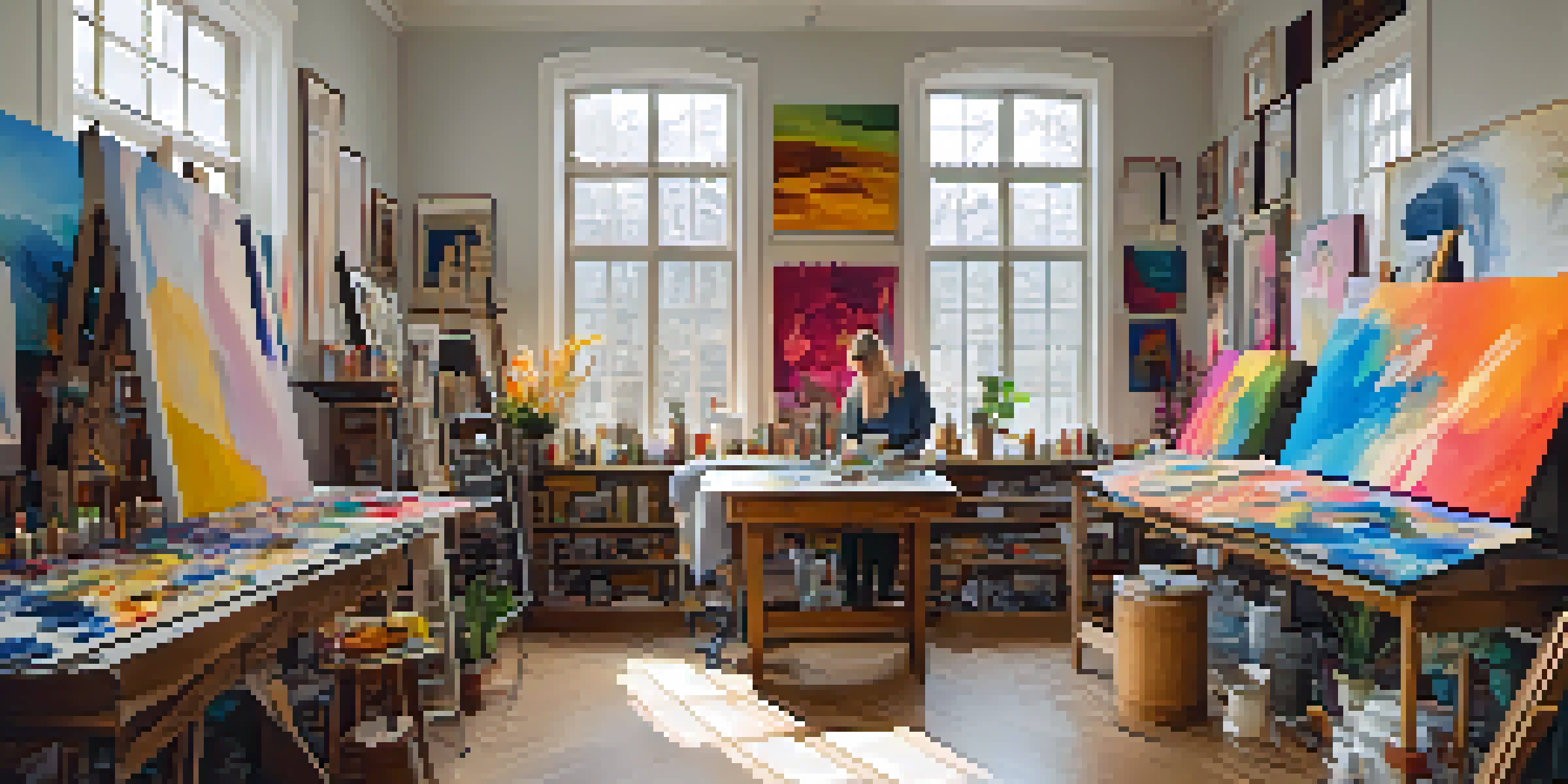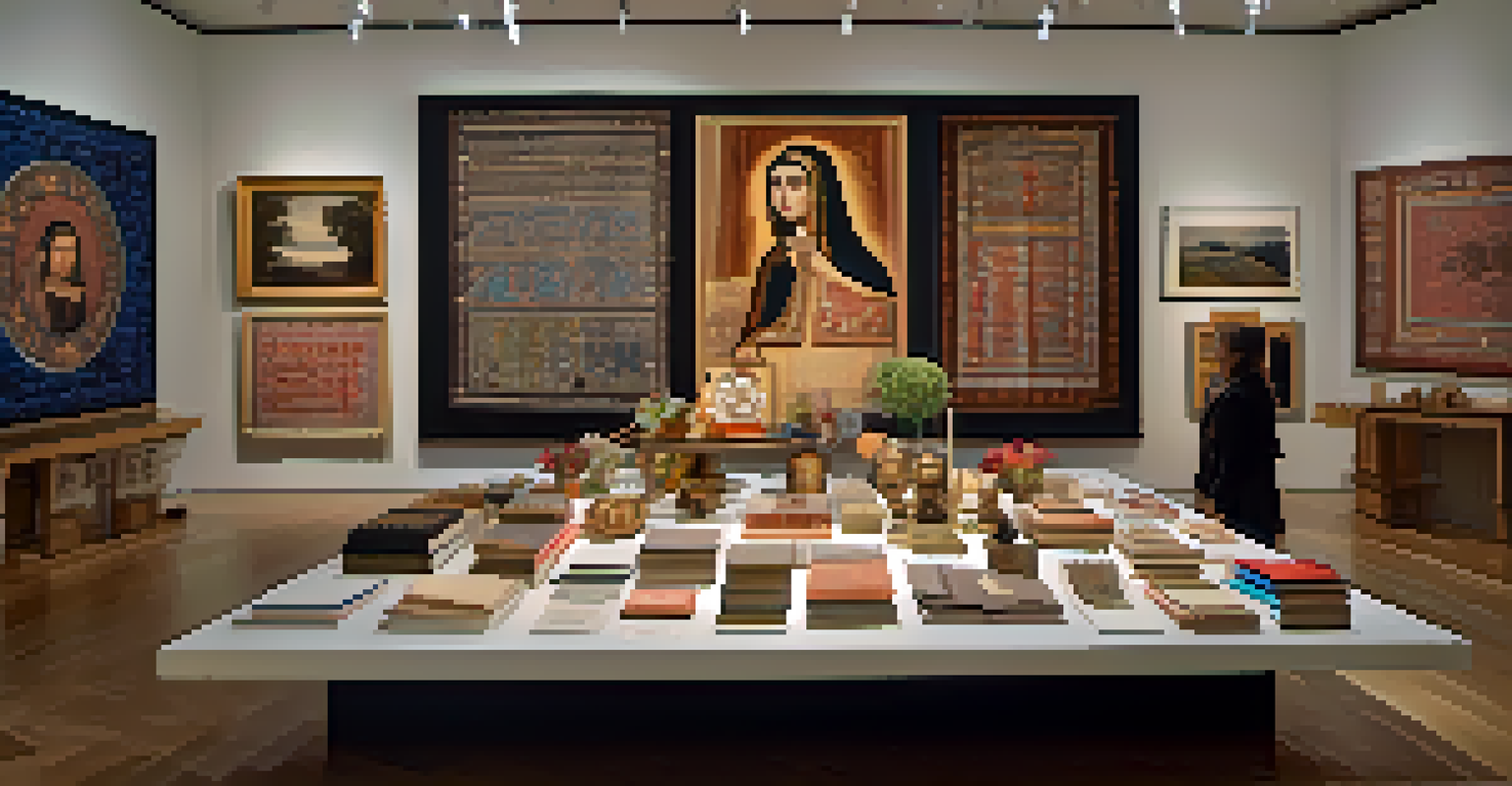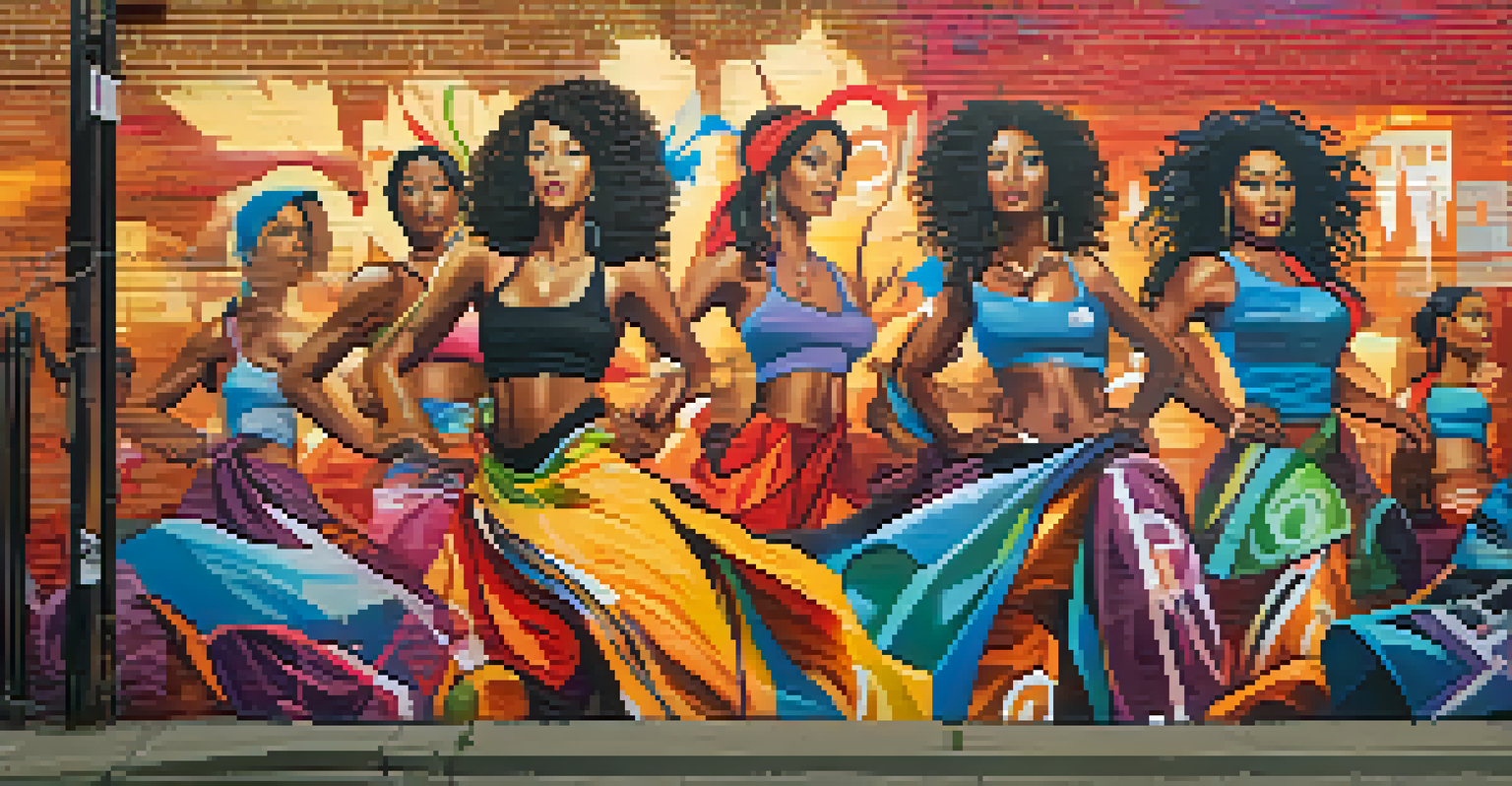Feminist Art: Challenging Gender Norms Through Visual Expression

Defining Feminist Art: A Movement Beyond Aesthetics
Feminist art is not just about creating visually appealing pieces; it's a movement aimed at challenging societal norms regarding gender. Emerging in the late 1960s, it sought to highlight women's experiences and perspectives that were often overlooked in traditional art. By incorporating themes of identity, power, and societal roles, feminist artists lay bare the complexities of womanhood and gender dynamics.
The personal is political.
These artists utilized various mediums—from painting and sculpture to performance and installation—to express their messages. The goal was to provoke thought and inspire discourse around gender inequality, allowing viewers to see the world through a different lens. This art movement fundamentally reshaped how we perceive gender roles in both art and society.
In essence, feminist art acts as a mirror reflecting the struggles and triumphs of women. It's a call to action, urging individuals to question existing norms and consider the implications of gendered expectations. This movement's legacy continues to influence contemporary artists who strive to challenge the status quo.
Historical Context: The Roots of Feminist Art
To understand feminist art, we must look back at the historical context that birthed it. The women's liberation movement in the 1960s and 70s provided a fertile ground for artists to voice their frustrations and aspirations. Many women artists were keenly aware of the art world's male-dominated narrative and sought to carve out their own space.

During this time, artists like Judy Chicago and Barbara Kruger emerged, pushing boundaries and creating works that highlighted women's issues. Chicago's 'The Dinner Party,' for example, is an iconic installation that celebrates women's contributions throughout history. Such pieces not only challenged artistic conventions but also invited audiences to reconsider the portrayal of women in art.
Feminist Art Challenges Gender Norms
Emerging in the late 1960s, feminist art seeks to question and reshape societal norms surrounding gender through diverse artistic expressions.
This historical backdrop is crucial for appreciating how feminist art has evolved. The movement has continually adapted to address contemporary issues, making it relevant across generations. By examining this context, we can better appreciate the ongoing dialogue between art, feminism, and society.
Key Themes in Feminist Art: Identity and Representation
Identity and representation are central themes in feminist art, as artists often explore what it means to be a woman in various cultural contexts. This exploration can take many forms, from personal narratives to broader societal critiques. Artists like Frida Kahlo and Yayoi Kusama delve into their unique experiences, blending autobiographical elements with universal themes.
Art must be an integral part of the struggle for women’s liberation.
Through their work, these artists address issues such as body image, mental health, and the intersectionality of gender with race and class. For instance, Kahlo's self-portraits reflect her struggles with identity, while Kusama's installations challenge perceptions of femininity and mental illness. These explorations resonate deeply with audiences, inviting them to reflect on their own identities.
Moreover, feminist art often seeks to reclaim and redefine representation in a way that empowers women. By presenting diverse perspectives, these artists challenge stereotypes and advocate for a more inclusive narrative. This emphasis on identity encourages viewers to question how gender shapes their own experiences and perceptions.
Challenging the Male Gaze: Feminist Art's Reclamation
One of the most significant contributions of feminist art is its challenge to the 'male gaze,' a term coined by film theorist Laura Mulvey. This concept refers to the way women are often objectified in visual arts and media, seen through a male perspective that reduces them to mere objects of desire. Feminist artists aim to subvert this gaze by presenting women as subjects with agency.
By creating works that highlight women's experiences and perspectives, these artists reclaim their narratives. For example, Cindy Sherman's photography often critiques the roles women are expected to play in society, transforming traditional representations into powerful commentaries. This shift not only empowers women but also encourages viewers to reconsider how they consume visual imagery.
Identity and Representation Matter
Central themes in feminist art focus on exploring women's identities and experiences, often reclaiming representation to empower diverse voices.
Through their work, feminist artists invite audiences to engage with the subject matter critically. They challenge viewers to question their own perceptions and biases, fostering a deeper understanding of gender dynamics. This reclamation of the narrative is a powerful aspect of feminist art, promoting a more equitable representation of women.
Feminist Art Today: Contemporary Voices and Issues
Feminist art continues to thrive today, with contemporary artists addressing current issues through their work. Many modern feminist artists are expanding the conversation to include intersectionality, exploring how factors like race, class, and sexuality intersect with gender. This broadening of focus allows for a more nuanced understanding of women's experiences.
Artists like Kara Walker and Zanele Muholi use their platforms to confront and challenge societal norms, often addressing themes of race and identity in addition to gender. Walker's powerful silhouettes tackle the complexities of African American history, while Muholi's photography celebrates the lives of Black LGBTQ+ individuals. These voices reflect the diverse realities of womanhood in today's world.
Moreover, the rise of social media has provided new avenues for feminist art to flourish. Platforms like Instagram allow artists to share their work with a global audience, sparking conversations and fostering community. This accessibility ensures that feminist art remains relevant, engaging new generations in the ongoing fight for gender equality.
The Impact of Feminist Art on Society and Culture
Feminist art has significantly impacted society and culture, reshaping perceptions of gender and inspiring social change. By challenging traditional narratives and advocating for representation, feminist artists have opened up dialogues about gender equality and women's rights. Their work encourages viewers to critically examine societal norms and consider the implications of their beliefs and actions.
Additionally, feminist art has influenced a wide range of cultural sectors, from advertising to fashion, prompting brands to rethink their messaging. As consumers increasingly demand authenticity and inclusivity, companies are responding by featuring diverse voices and representations. This shift reflects the power of feminist art to drive cultural change and promote social justice.
Feminist Art Drives Cultural Change
By influencing societal perceptions and inspiring social discourse, feminist art plays a crucial role in advocating for gender equality and inclusivity.
Ultimately, the impact of feminist art extends beyond the gallery walls. It serves as a catalyst for conversations about identity, power, and equality, inspiring individuals to advocate for change in their own communities. By engaging with feminist art, we can all contribute to a more equitable society.
Conclusion: The Ongoing Journey of Feminist Art
The journey of feminist art is far from over; it continues to evolve and adapt to the changing social landscape. As new issues arise, feminist artists will undoubtedly respond with innovative and thought-provoking work that challenges us to rethink our assumptions about gender. This dynamic nature ensures that feminist art remains relevant and impactful.
Moreover, the legacy of feminist art serves as a reminder of the importance of diverse voices in the art world. By celebrating and amplifying these perspectives, we create a richer cultural tapestry that reflects the complexity of human experience. Feminist art invites us all to engage in this ongoing dialogue and consider our roles in shaping a more equitable future.

In conclusion, feminist art is not just a historical movement; it is a powerful force that continues to inspire and provoke thought. By embracing its themes and messages, we can contribute to a more just society, one where all voices are heard and valued.